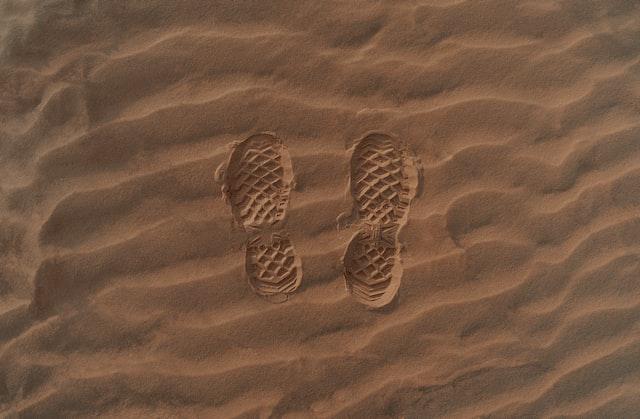What is the Frye Standard?
Our product recommendations are made independently, but we may earn affiliate commissions if you use a link on this page.
In the United States, the court system can be a bit of an enigma. There are so many steps to bringing a case to court and so many terms that the average individual may not know. One of these terms is the Frye standard.
The Frye standard is a test used to decide if scientific evidence can be admitted into the evidence to be shown to a jury during a trial. This test can sometimes also be called the general acceptance test, and it relies heavily on the scientific method.
Want to learn more about the Frye standard and how it is used in US courts? Read on to discover the basics of how this method is used and when it is applied in court.

What is the Frye Standard?
The Frye standard is a method used to decide if evidence can be presented in a court system. It is one of the older methods of deciding if evidence can be submitted, and in many states, it has been replaced by the Daubert standard.
The Frye standard is founded on the basis that any evidence submitted to the US court system as evidence for a case must be backed by the scientific method. This means that an individual can’t just say a certain test works without showing the methodology behind said test.
The main reason the Frye standard is so well known is because of lie-detector tests or polygraph tests, which were found to be inadmissible because there wasn’t enough scientific method to back them.
In order to admit evidence into court using the Frye standard, at least the majority of experts in the field that the evidence belongs to must agree that the test is technically sound. This means that in order for a polygraph test to be admissible in court, the majority of professionals in the polygraph testing field must agree that polygraph tests are technically sound and be able to explain why they think that way (basically show evidence).
Of course, because polygraph tests aren’t admissible in court, it’s easy to conclude that many experts in the field think these tests aren’t reliable.
When is the Frye Standard Applied?
The Frye standard is applied whenever there is evidence that is based on science to be presented in a court case. For example, if a lawyer wants to admit DNA evidence to the court, they must test that DNA evidence using a method that passes the Frye standard.
Fingerprinting and DNA are two types of tests that pass the Frye standard. But they aren’t the only two. In fact, as the years go by, more and more scientific tests for evidence are being developed. If there is a new one that a lawyer wants to use in a court case, it will be subject to the Frye test before it is approved.
This brings up a problem with the Frye standard because when new tests are submitted to the court, it is difficult to ask other experts in the field as they themselves may not know about the test yet. For this reason, many people want to go away from the Frye standard because it isn’t easy to use with new technologies which are popping up daily in the current world.

What is the Daubert Standard?
As mentioned above, many courts now use the Daubert standard instead of the Frye standard when it comes to admitting evidence. Unlike the Frye test, which puts the burden of deciding if the evidence is admissible on the community, the Daubert test allows judges to make the decision on what evidence is admissible in court.
While the Daubert standard does put more responsibility on the judge, it also gives them a list of criteria to consider when approving or denying the admission of evidence. In order for a piece of evidence to pass the Daubert test, it must be backed by scientific reasoning, which the judge thinks is valid for the case.
Below are the steps a judge must go through before allowing evidence to pass the Daubert standard.
- Can the theory or technique in question be tested?
- Has it been tested?
- Has the theory or technique been peer reviewed and subject to publication?
- Is there an error rate? What is it?
- Are there standards controlling this theory or technique?
- Is it considered relevant in the scientific community?
As you can see, there is much more to the Daubert test than just a judge deciding if they are in the mood to admit a test or not. The reason many states have switched from the Frye method to the Daubert method is that the Daubert method is much less time intensive to verify and can allow for new science to be used in court cases with some ease.
With the Daubert method, if a new scientific test is developed tomorrow to know if someone is guilty based on their blood, judges won’t have to wait years to allow evidence tested with this technology to be submitted in court. Of course, they will have to wait until there is some peer reviewing or testing done, but they don’t have to wait until the entire scientific community knows about it either.
What is the Difference Between the Daubert and the Frye Standard?
The main difference between the Daubert and the Frye standard is who must agree on the scientific method in order for evidence to be admitted to the court. In the Frye method, it is clear that experts in the scientific community must agree on a test's validity in order for it to be considered evidence.
Using the Daubert method, while there still must be a scientific method behind a test used for evidence, only the court judge must be convinced of this method. This means it is much easier to allow new tests or procedures to be submitted under evidence than with the Frye method.

When is the Frye Standard or Daubert Method Used?
In most cases, the Frye standard or Daubert method has already been used to test the admissibility of evidence before the case ever reaches the court system. This is because, in most cases, the test is submitted as evidence that is not new.
When a new technology or test is discovered, and a lawyer wants to use it in a court case, then they will typically notify the judge prior to the case. Even if they do not, and the evidence is presented, the judge still has to look over all the evidence using the chosen method and can strike evidence from a case after the fact.
This means that just because a certain test is presented as part of court proceedings that there is no guarantee that it will end up as part of the jury's (or judge’s) final decision. Evidence can be removed from court proceedings at any time of the proceedings until the jury leaves for deliberation.
Who Presents Evidence for the Daubert Standard?
The burden of proof falls on the lawyer who is admitting the evidence for evaluation. This means that if an attorney would like to use a certain new test and have it admitted as evidence, they need to find all the scientific research backing the test and present it to the judge.
As mentioned above, this is typically done before a court case begins, but can also be done during the course of the court proceedings. No matter when it is presented, it is the judge who has the final say as to whether or not a piece of evidence has passed the Daubert standard and can be admitted as evidence in court proceedings.
What Evidence Standard is Used in Federal Courts?
In the US Federal court system, only the Daubert method is used. Remember that the US Federal court system is the highest in all the land and only processes the most extreme cases. Therefore it makes sense that they would want to be able to use the best evidence known to science, which can be done with ease under the Daubert test.
As far as state and local court systems go, there are some which continue to use the Frye method and others that use the Daubert method. The Federal government allows states to make their own decisions, but most states have converted to the Daubert method because it is easier in the modern world where technology is improving on a daily basis.
As of 2022, 9 states have adopted the Daubert standard in its entirety, while a further 18 have adopted at least part of this standard. Some states don’t use the Frye or the Daubert standard and instead choose to make their own standard. Either way, there are very few states in the US operating fully on the Frye standard, and it is expected to be even less as the years go on.
Reference Legal Explanations
If you use any of the definitions, information, or data presented on Legal Explanations, please copy the link or reference below to properly credit us as the reference source. Thank you!
-
<a href="https://legal-explanations.com/blog/what-is-the-frye-standard/">What is the Frye Standard?</a>
-
"What is the Frye Standard?". Legal Explanations. Accessed on December 11, 2024. https://legal-explanations.com/blog/what-is-the-frye-standard/.
-
"What is the Frye Standard?". Legal Explanations, https://legal-explanations.com/blog/what-is-the-frye-standard/. Accessed 11 December, 2024
-
What is the Frye Standard?. Legal Explanations. Retrieved from https://legal-explanations.com/blog/what-is-the-frye-standard/.